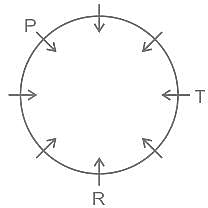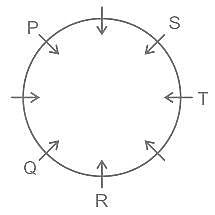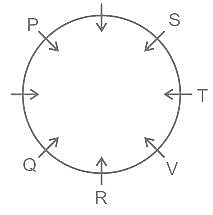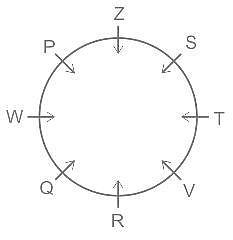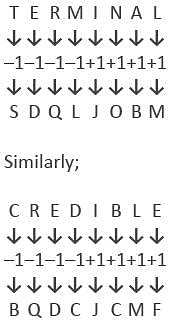Bihar B.Ed CET Mock Test - 3 - Bihar PGT/TGT/PRT MCQ
30 Questions MCQ Test - Bihar B.Ed CET Mock Test - 3
Directions: In each of the following questions, a sentence has been given in Active (or Passive) Voice. Out of the four alternatives suggested, select the one that best expresses the same sentence in Passive/ Active Voice.
I saw him leaving the house.
Directions: The following question has two blanks, each blank indicating that something has been omitted. Choose the set of words for blanks that best fits in the context of the sentence.
An apocalyptic future is a _____________ topic for science fiction writers which is _____________ in quite a number of movies as well.
| 1 Crore+ students have signed up on EduRev. Have you? Download the App |
In the following question, assuming the given statements to be true, find which of the conclusion among given conclusions is/are definitely true and then give your answer accordingly.
Statement: P < Q < R < S = T
Conclusion:
I. Q < T
II. P > S
III. R = T
Study the following Venn diagram carefully and answer the question.
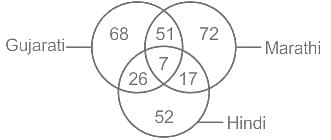
How many persons speak only two languages?
In each of the following questions find out the alternative which will replace the question mark.
Cassock : Priest :: ? : Graduate
Directions to Solve
In each of the following questions, four words have been given out of which four are alike in some manner, while the third one is different. Choose the word which is different from the rest.
Question -
Choose the word which is different from the rest.
Directions: Study the following question carefully and choose the right answer.
In a certain code ‘TERMINAL’ is written as ‘SDQLJOBM’. How is CREDIBLE written in that code?
“Finances of Panchayati Raj Institutions (PRIs)” report, recently seen in the news, is released by which institution?
The main air pollutant(s) in metropolitan cities is/are
Which of the following statements regarding utility is not true?
Bhimbetka caves show the continuity of human evolution from the Lower Palaeolithic period to the Mesolithic period to the Chalcolithic period. Why?
1. It contains evidence of the use of tools and implements from all these periods.
2. There are a large number of Shankhalipi inscriptions in the Bhimbetka cluster of rock shelters.
Which of the above is/are correct?
Into how many constituencies is the country divided for Lok Sabha elections?
What fundamental principle of democracy ensures equal voting rights for all citizens?
Understanding the principles of development of a child helps a teacher in
The picture without dialogues is an example of which type of communication?
ICT is a broad and comprehensive term. Information technologies are powered by mainly two types of communication technologies. Name them?



